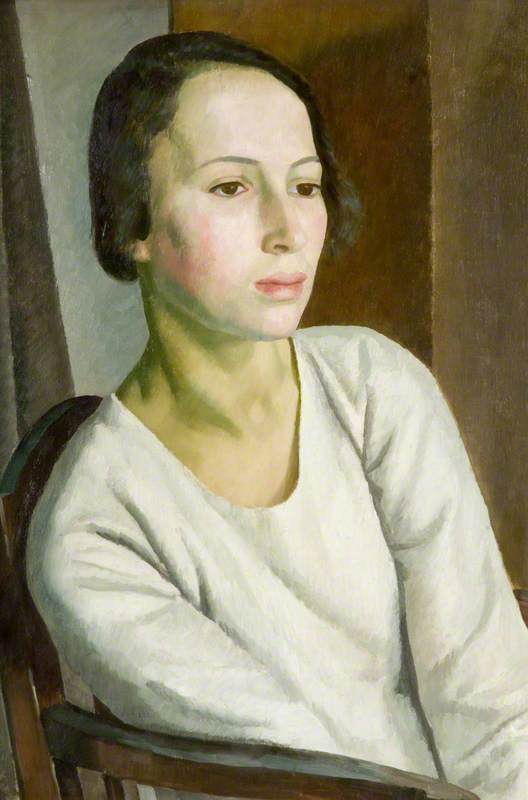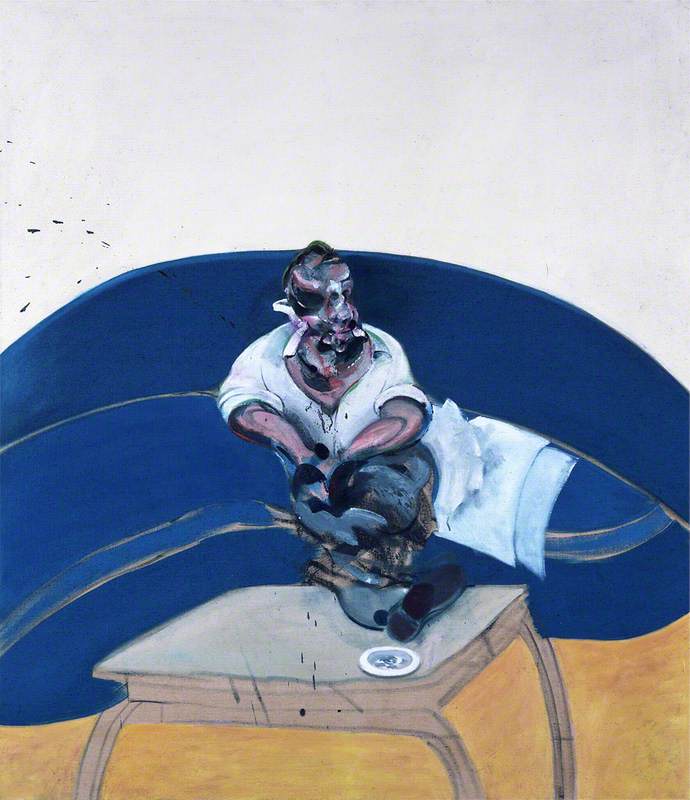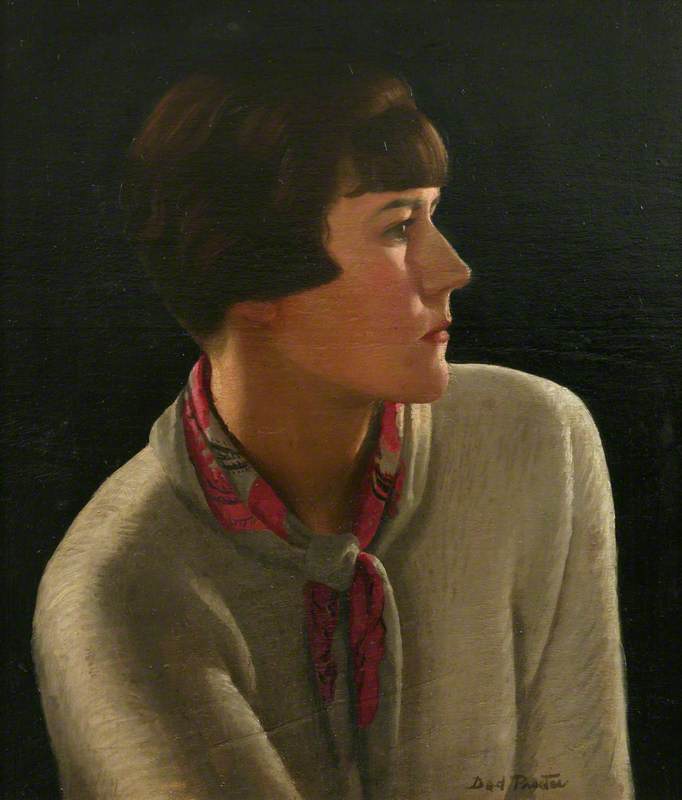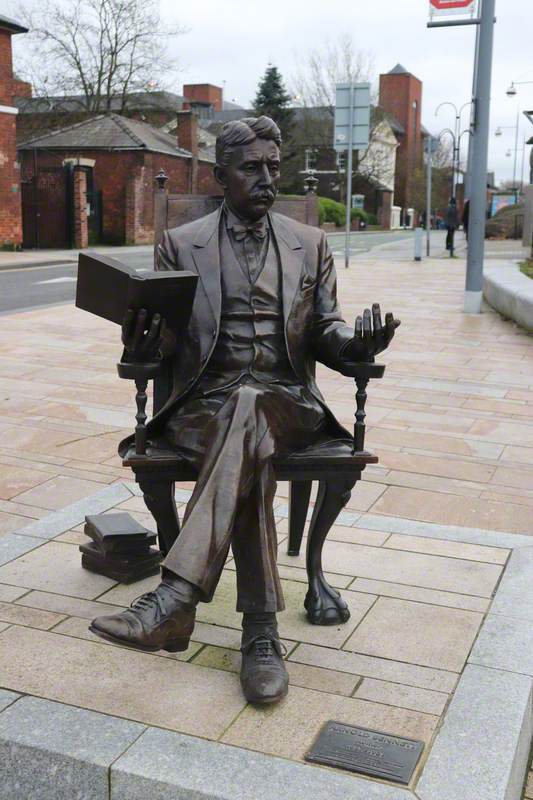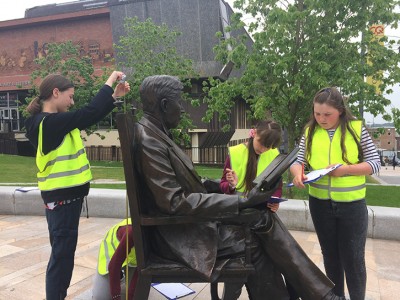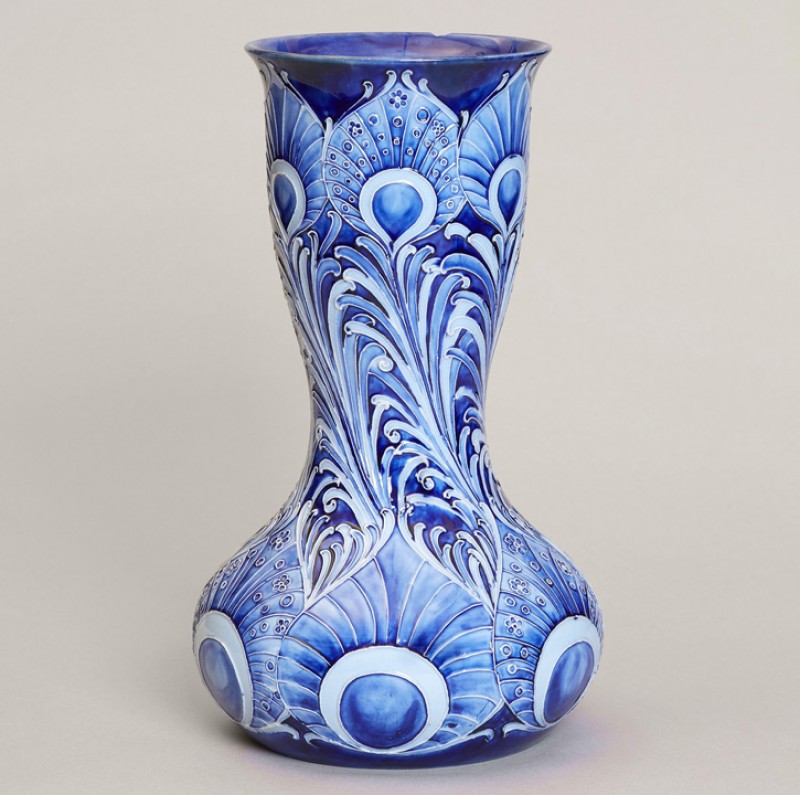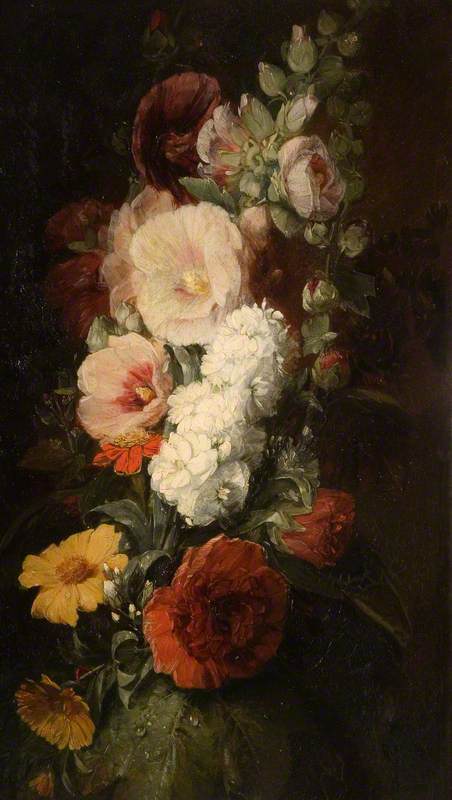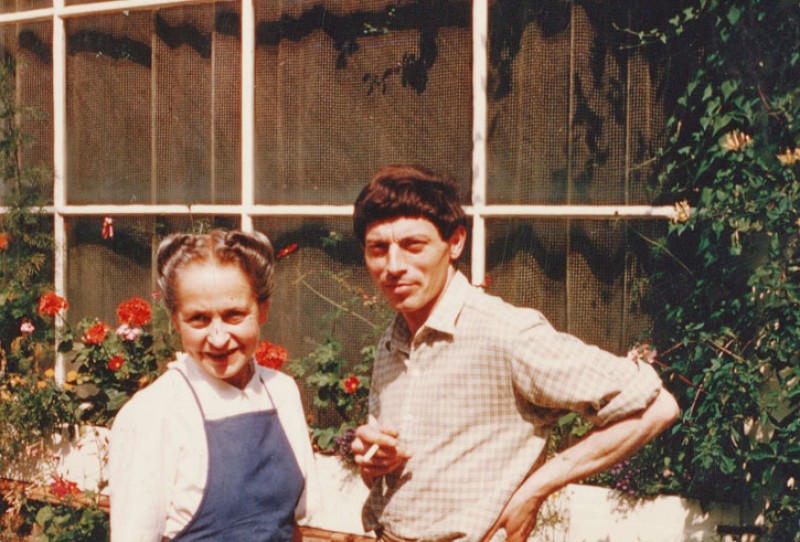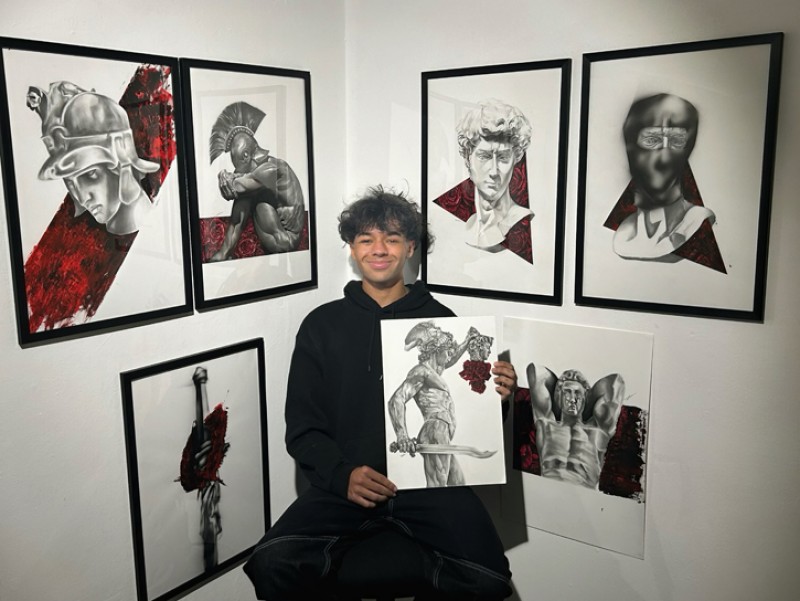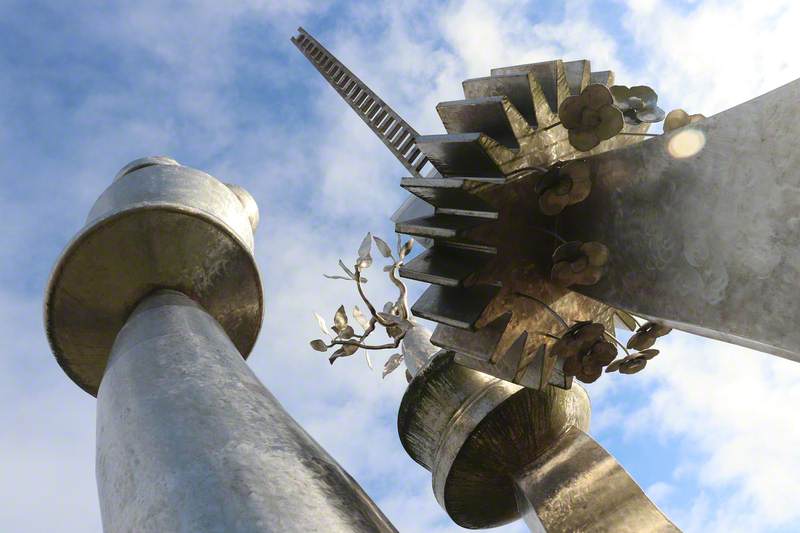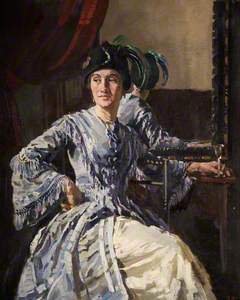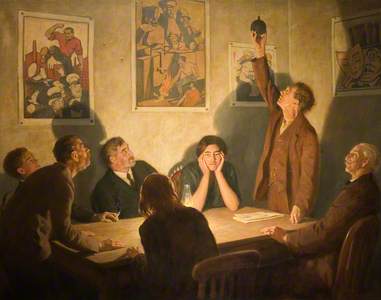The art gallery at The Potteries Museum & Art Gallery grew out of a bequest from Dr John Russell, OBE in 1927 who had attached a condition that the Corporation of Stoke-on-Trent 'provide a building or part of a building to be set apart for the reception and storage of pictures and to be maintained as an Art Gallery'.
Also at this time the City Museum Service had an art sub-committee that had been collecting contemporary art for a number of years in order to inspire artists working in the ceramics industry. Amongst the first works they purchased in 1926 were Girl in White by Dod Procter and The Lilac Dress by Philip Connard. The Russell bequest enabled this collection to develop further.
Another early purchase was Miss Edith Evans in a Restoration Comedy by Ethel Leontine Gabain.
Miss Edith Evans in a Restoration Comedy
c.1934–1935
Ethel Léontine Gabain (1883–1950) 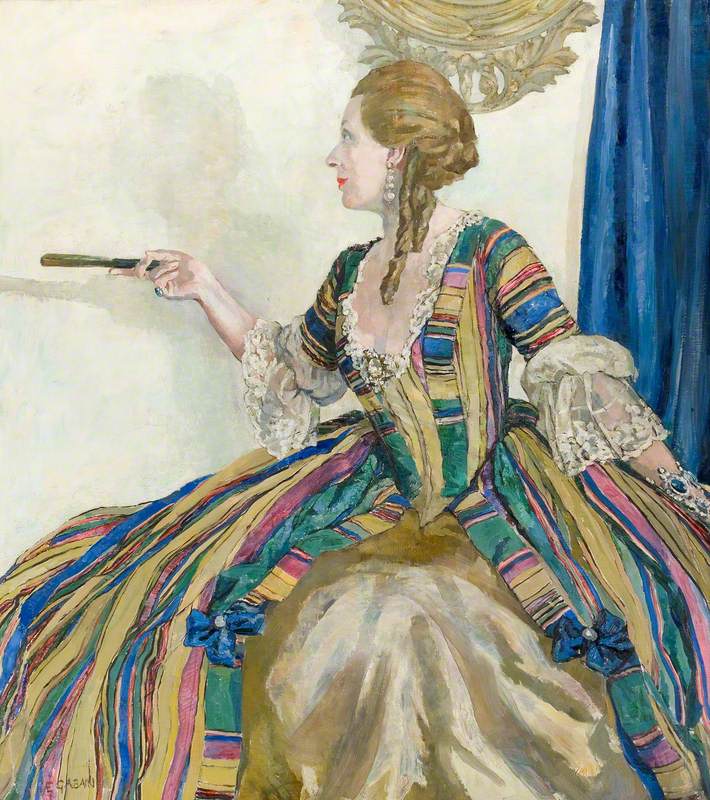
Gabain was a member of the Senefelder Club, a little known group of artists led by artist and teacher F. E. Jackson, and the artists A. S. Hartrick, John Copley, Joseph Pennell, Lily Blatherwick and Gabain, which formed to promote lithography as an artform. Most British artists active during the 1920s and 1930s exhibited or were associated with the Club who also exhibited at the 1912 Venice Biennale. The Museum has many works by this group in its outstanding print collection.
Throughout the 1920s and 1930s the Museum was actively collecting work by contemporary artists and held many exhibitions featuring work by the leading artists of the day. These exhibitions were widely supported and attracted attention from eminent art figures based in London including the art historian and co-founder of The Courtauld Institute of Art, Sir Robert Witt, CBE. Many of the paintings in the collection have hidden stories and intriguing facts behind them.
Brotherhood of Man by John Collier shows a group of anarchists meeting to review a bomb invented by one of the group.
The posters in the background are based on actual Bolshevik designs that were confiscated by Scotland Yard and, at the time Collier was painting, held in the British Museum. The figure holding the bomb is Charles Robert Chisman who founded the Art Exhibition Bureau that circulated works by living artists to provincial museums. The organisation acted as secretaries to many painters including John Collier. It was through this connection that Collier asked Chisman to pose as the anarchist. Chisman, or parts of Chisman, appear in other paintings, such as Eamon de Valera by Sir John Lavery, held by Dublin Art Gallery. His hands also appear in a portrait of Briton Rivière and his legs in the portrait of Sir Thomas Jackson, both by Sir Hubert von Herkomer, which have been exhibited at the Royal Academy.
Jean Milton, Exhibitions & Interpretation Officer, The Potteries Museum & Art Gallery
